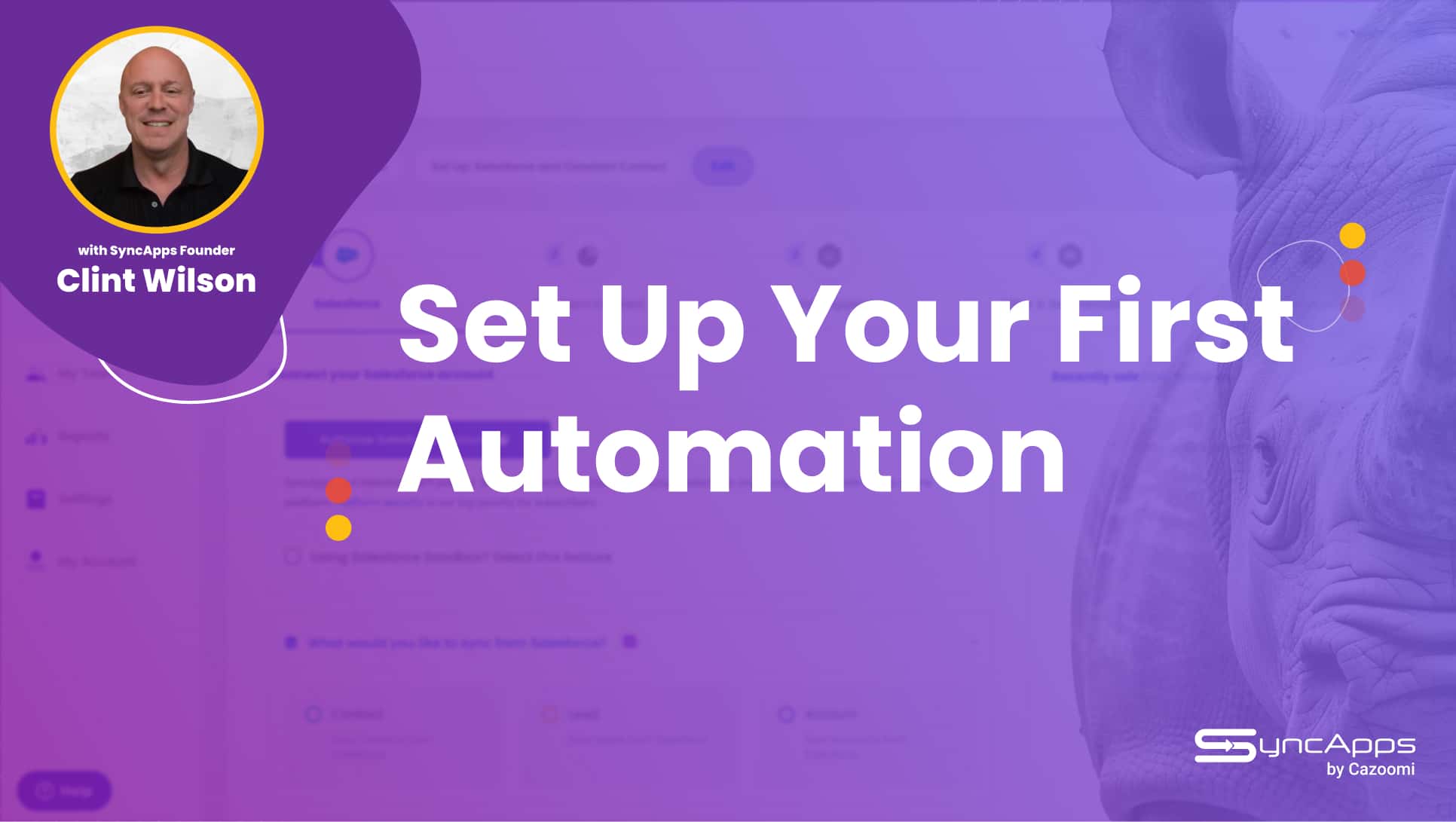The 2025 Marketing Automation Trends You Didn’t See Coming (Or Did You?)

2025 Marketing Automation Trends That You Should Already Be Preparing for
Yes, it’s that time of the year again. The time we look at what lies ahead.
Marketing automation isn’t just a buzzword tossed around at tech conferences; it’s evolving faster than your Aunt Marge can figure out how to use TikTok.
As we gear up for 2025, it’s crucial to stay ahead of the curve. Grab your crystal ball (or maybe just your smartphone) as we dive into the 2025 marketing automation trends that promise to shake things up—some of them might even make you chuckle.
2025 Marketing Automation Trends — Are You Ready for Them?
Some of the things below aren’t new. Like, you’ve surely heard of AI, right?
What’s new, though, is the way they will be used in 2025’s marketing automation strategies.
Buckle up, you’re in for a ride.
The Rise of AI-Powered Personalization
Let’s start with the elephant in the room: artificial intelligence. Yes, the robots are coming for our jobs, but they’re also coming to help us market better.
By 2025, expect AI to take personalization to new heights. Forget basic segmentation; we’re talking about AI that can analyze customer behavior, preferences, and even emotional responses to tailor content like a bespoke suit.
Picture this: a customer visits your website, and within milliseconds, AI suggests the exact product they didn’t know they needed. It’s like your marketing team has a psychic on staff, but less creepy and more data-driven.
With tools analyzing user interactions across multiple channels, the 2025 marketing automation trends are steering towards hyper-personalization, making generic emails as obsolete as floppy disks.
But let’s be real for a moment — AI personalization isn’t just about spouting recommendations. It’s about building a relationship with customers that feels organic rather than forced. Imagine receiving an email that feels like it was written just for you, referencing your favorite color, that one vacation you took last year, and your recent obsession with that weird indie band.
That’s the magic of AI-driven personalization.
In 2025, if you’re not leveraging AI to understand your customers on a deeper level, you might as well be throwing darts at a board and hoping for the best. Brands that invest in AI personalization will not only see higher engagement rates but also increased customer loyalty.
After all, who doesn’t want to feel special?

The Integration Revolution: iPaaS Takes Center Stage
Integration is no longer just a nice-to-have; it’s a necessity. As businesses adopt multiple platforms for various functions, the integration platform as a service (iPaaS) is becoming a trend you can’t ignore.
By 2025, if your marketing automation system can’t seamlessly integrate with your CRM, social media, and whatever new tech comes along, you might as well be using smoke signals to communicate with your customers.
Imagine a world where your email marketing, social media, and customer data all sing in harmony. That’s not a dream; that’s iPaaS making its way into your life like an overly enthusiastic new puppy.
Businesses are realizing that a well-integrated tech stack can increase efficiency, reduce errors, and provide better insights into customer behavior. So, get ready to embrace the iPaaS revolution because, frankly, it’s about time.
But what does this integration mean for the average marketer? For one, it means less time spent on tedious manual data entry.
You know, the soul-sucking task that has you questioning your life choices. With iPaaS, your data flows seamlessly between systems, allowing you to focus on what really matters: crafting that perfect email campaign or brainstorming the next viral TikTok.
Moreover, the data insights gained from a well-integrated system can help you make informed decisions. Picture yourself at a dinner party where everyone is talking about the latest trends, and you’re armed with the most relevant stats and insights. With integration, you’ll be the life of the party — unless, of course, you start talking about your cat’s new diet.
So yeah, it’s no wonder that iPaaS will be a $141 billion (with B!) industry by 2032. Our advice?
Don’t be like your Aunt Marge — stay ahead of the trends and use integration before everyone else (and especially your competitors) does.
Start here, it’s 100% free to try.
Chatbots: The New Customer Service Reps (Who Never Take a Coffee Break)
Let’s face it: sometimes, we just don’t want to talk to humans. Enter chatbots—the tireless, caffeine-free customer service representatives of the future. By 2025, chatbots will be more intelligent, able to handle complex queries, and provide 24/7 support without ever needing a nap.
It’s no wonder they’ll be a $20.8 billion industry by 2029!
What’s more, these chatbots won’t just spew out FAQs; they’ll engage customers in conversations that feel personal. They’ll know your name, your shopping history, and your last three existential crises.
And they’ll remember that you prefer chocolate over vanilla — because who doesn’t appreciate a little sweet personalization?
Think of chatbots as your trusty sidekick, always ready to save the day. Need assistance at 3 AM? No problem! Chatbots don’t have bedtime; they’re available to help your customers at any hour.
This means fewer abandoned carts and a better overall customer experience. Plus, with advancements in natural language processing, chatbots will be able to handle increasingly complex queries and even recognize sarcasm (because, let’s be honest, that’s how most of us communicate).
But don’t worry, your human customer service reps won’t be out of a job — yet. The best chatbots will work alongside human agents, handling the mundane inquiries while humans tackle the tricky stuff. It’s a match made in marketing heaven!

To be honest, this is not a trend we fully support. At SyncApps, we offer 24/7 human support. This includes complimentary consultations with all our clients, irrespective of the plan they’re on.
Don’t believe us? Try it for yourself! Set up your account and schedule your complimentary consulting call!
Video Content: No Longer Just for Cat Memes
Video content is already a significant player in marketing, but by 2025, it will be the superstar, overshadowing every other content form like a giant in a room full of toddlers. If you haven’t jumped on the video bandwagon yet, buckle up.
Expect an explosion of interactive video content, live streaming, and shoppable videos that make clicking “buy” as easy as breathing.
Remember the days when you could just read a blog post? [Side note: we probably should have turned this blog post into a video.]
Well, those days are fading faster than your attention span during a 30-minute YouTube ad. In 2025, engaging your audience with video content will be the norm, and brands that don’t adapt may as well be sending smoke signals.
Interactive videos, where viewers can choose their own adventure, will be all the rage. Imagine watching a video where you can pick different paths based on your preferences—like a choose-your-own-adventure book but without the paper cuts. These videos will not only boost engagement but also make the viewing experience feel more personalized.

Additionally, live streaming will take center stage, giving brands a platform to connect with audiences in real time. Think of it as a virtual town hall meeting, but way cooler.
Brands will use live streaming to launch products, host Q&A sessions, and showcase behind-the-scenes content, allowing customers to feel like they’re part of the action.
The Role of Data Privacy: Let’s Not Scare the Customers Away
As we enter 2025, data privacy will no longer be a topic buried in a corner of a tech conference; it’ll be at the forefront of marketing strategies. With consumers becoming more aware of their digital footprints, brands will need to tread lightly and respect privacy.
Expect transparency in data collection to become a major marketing automation trend. Businesses will need to clearly communicate how they use customer data, making privacy policies easy to understand (because let’s be honest, most are as clear as mud).
If your marketing automation tools aren’t up to snuff in this department, you might just find yourself facing a public relations nightmare.
Moreover, compliance with data protection regulations, such as GDPR and CCPA, will become standard practice. Brands that can’t adapt may face hefty fines, and nobody wants to pay for a marketing blunder.
So, embrace data privacy as part of your marketing strategy; it’s not just good for customers, it’s good for business too. It’s not just one of the 2025 marketing automation trends; it’s here to stay.
Omnichannel Marketing: Because One Channel Isn’t Enough
Gone are the days when customers would stick to one channel. By 2025, your marketing strategy will need to encompass every channel imaginable — social media, email, SMS, you name it.
This is where omnichannel marketing comes into play, allowing for a seamless experience across all platforms.
Imagine a customer seeing your ad on Instagram, receiving a personalized email, and then engaging with your chatbot on your website, all without missing a beat. That’s the future we’re looking at! Integrating your marketing efforts across channels will be crucial in creating a cohesive customer journey.
So, dust off that integration strategy and get ready to impress!
The key to successful omnichannel marketing lies in understanding the customer journey. You’ll need to map out every touchpoint and ensure that your messaging remains consistent, regardless of the channel.
This means crafting a unified brand voice and ensuring that your audience receives a cohesive experience — because nothing says “I care” like a company that remembers your last purchase.
But let’s not forget about the power of data in this equation. By analyzing customer behavior across channels, you’ll gain insights into what works and what doesn’t.
This allows you to optimize your marketing efforts in real time, ensuring that you’re always one step ahead of the competition.
Is your data siloed across channels and SaaS tools? We have a solution for that *wink-wink*. Integrate your CRM or ERP with marketing automation platforms and start marketing like it’s 2024, not 2025.
This is your portal into the future of marketing automation.
Predictive Analytics: The Crystal Ball of Marketing
Predictive analytics is here to save the day, helping marketers make data-driven decisions instead of relying on gut feelings. By 2025, marketing automation tools will be equipped with advanced predictive analytics that not only analyze past data but also forecast future trends.
This isn’t just about tracking which emails got opened; it’s about understanding when customers are likely to convert and what might deter them. It’s like having a marketing guru whispering in your ear, guiding you towards success while avoiding the pitfalls of guessing.
Imagine being able to predict which customers are on the verge of leaving and proactively addressing their concerns before they hit the exit button. With predictive analytics, this isn’t just a fantasy; it’s a reality. Brands that harness this technology will have a competitive edge, enabling them to tailor their strategies based on real-time insights.

But be warned: with great power comes great responsibility. Predictive analytics requires clean, accurate data to be effective. If your data is a messy jigsaw puzzle with missing pieces, your predictions will be about as reliable as a weather forecast in the middle of a tornado.
Ensuring data quality should be a top priority for any brand serious about leveraging predictive analytics in their marketing automation efforts.
Furthermore, as you collect and analyze data, remember that insights gained should lead to action. Predictive analytics isn’t just about looking at pretty graphs.
It’s about translating those insights into strategic decisions that can drive conversions and improve customer satisfaction. So, roll up your sleeves and prepare to dive deep into your data pool because the future of marketing automation hinges on it.
Voice Search Optimization: Are You Listening?
As voice-activated devices become more common, voice search optimization will be a crucial part of your marketing automation strategy by 2025. If your content isn’t optimized for voice search, you may as well be shouting into the void.
Think about it: how many times have you asked Siri or Alexa a question? Your audience is doing the same, and if your brand isn’t prepared, you could lose out on valuable traffic.
Focus on conversational keywords and long-tail phrases that mimic natural speech. Your SEO strategy in 2025 will depend on how well you can adjust to this new wave of technology.
To stay ahead, you’ll want to optimize your content for voice search queries. This means writing in a more conversational tone and focusing on the types of questions your audience is likely to ask.
Instead of “Best running shoes,” think more along the lines of “What are the best running shoes for beginners?” By thinking like your customer and anticipating their queries, you can improve your chances of appearing in voice search results.
Additionally, consider local SEO. Many voice searches are location-based — like “Where’s the nearest coffee shop?” So, if you run a local business, optimizing for local voice searches can help you reach more customers right when they need you.
The Push for Sustainability: Not Just a Trend, but a Movement
Sustainability isn’t just a nice-to-have anymore; it’s a must-have. By 2025, consumers will be looking to support brands that align with their values, particularly when it comes to environmental impact.
This means your marketing automation strategies should reflect sustainability efforts, whether through eco-friendly messaging or showcasing your brand’s efforts to reduce its carbon footprint.
Failing to adapt could leave you in the dust while your competitors shine with their eco-conscious initiatives. And let’s be real: who doesn’t want to feel good about their purchases?
Make sustainability a part of your marketing narrative, and watch your audience grow.
To capitalize on this trend, brands should consider incorporating sustainability into their messaging. Showcase your eco-friendly practices, whether that means using recyclable materials, reducing waste, or supporting local communities.

Consumers are increasingly aware of the impact their purchases have on the environment, and aligning your brand with sustainable practices can foster loyalty and attract new customers.
Moreover, integrating sustainability into your marketing automation strategy allows for targeted campaigns that resonate with eco-conscious consumers. Use data to understand which segments of your audience prioritize sustainability, and craft campaigns that speak directly to their values.
By doing so, you’ll not only enhance your brand image but also contribute to a greater cause — because who doesn’t want to save the planet while making a profit?
The Importance of Community Engagement: More Than Just a Buzzword
In 2025, the concept of community engagement will be more vital than ever. Consumers are looking for brands that foster connections and create a sense of belonging. No longer is it enough to simply sell a product.
Brands must engage with their audience on a deeper level.
This 2025 marketing automation trend goes hand-in-hand with the rise of social media communities. Brands that actively participate in conversations and build relationships with their audience will stand out from the crowd. Think of it as marketing in a more human-centric way.
By leveraging marketing automation tools, brands can streamline their community engagement efforts. This means not only responding to comments and messages but also proactively reaching out to engage with your audience.
Use polls, surveys, and user-generated content to encourage participation and create a sense of community around your brand.
Additionally, partnerships with influencers or other brands can enhance your community engagement efforts. Collaborating on campaigns or hosting events can help you reach new audiences while building meaningful connections.
The Future of Content Marketing: Interactive and Immersive Experiences
By 2025, content marketing will evolve to focus on more interactive and immersive experiences. Static blog posts and infographics are giving way to engaging formats that captivate and involve the audience.
Think virtual reality experiences, interactive quizzes, and gamified content that keeps users hooked.
In a world overflowing with information, capturing your audience’s attention is like trying to catch a greased pig—it’s a challenge. Interactive content not only grabs attention but also encourages deeper engagement, making it a powerful tool in your marketing arsenal.
Consider incorporating quizzes or polls into your marketing strategy. These can be used to gather insights about your audience while providing them with a fun, engaging experience.
Gamification elements can also be integrated into your marketing campaigns, creating a sense of competition and rewarding users for participating.
Furthermore, as technology advances, expect virtual and augmented reality to play a more significant role in content marketing. Imagine allowing customers to “try on” products virtually before purchasing or experiencing a brand’s story through immersive storytelling. These interactive experiences can leave a lasting impression and foster brand loyalty.
The Human Touch: Balancing Automation with Authenticity
As we look ahead to 2025, there’s one critical element that will never go out of style: the human touch. In a world dominated by automation, it’s easy to forget the importance of authentic connections. While marketing automation can streamline processes and improve efficiency, it shouldn’t replace the genuine interactions that build trust and loyalty.
Consumers crave authenticity; they want to know there are real people behind the brands they support. In 2025 and beyond, brands that prioritize authentic communication and relationships will thrive.
This means infusing personality into your automated messages and ensuring that your brand voice remains consistent across all touchpoints.
Consider implementing personalized video messages or handwritten notes for your loyal customers. These small gestures can make a significant impact, reminding customers that you value their business.
The goal is to strike a balance between automation and authenticity, leveraging technology while still connecting with your audience on a human level.
Conclusion: 2025 Marketing Automation Trends
As we step into 2025, marketing automation trends will continue to evolve, driven by technological advancements and shifting consumer preferences. The key takeaway? Embrace change, stay informed, and don’t be afraid to inject a little humor and personality into your marketing efforts.
Remember, the 2025 marketing automation trends are about more than just keeping up; they’re about leading the charge into the future of marketing. So gear up, adapt, and prepare for a wild ride!






